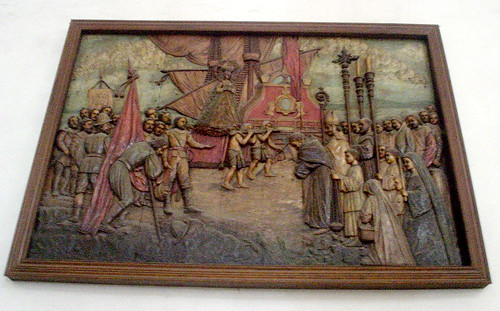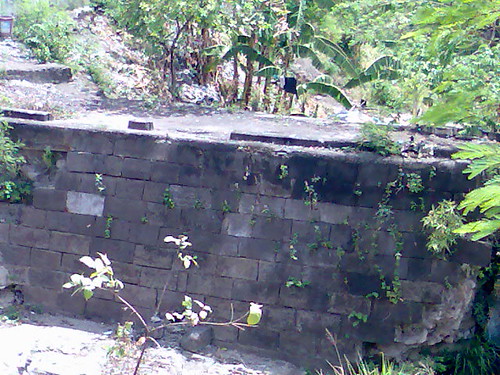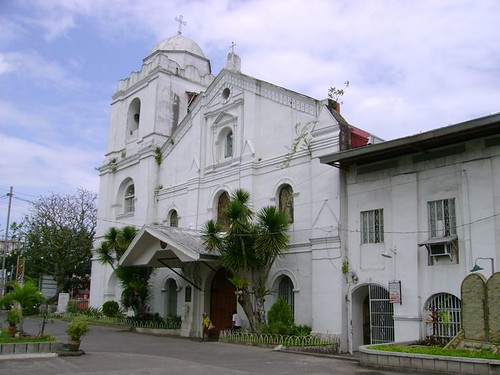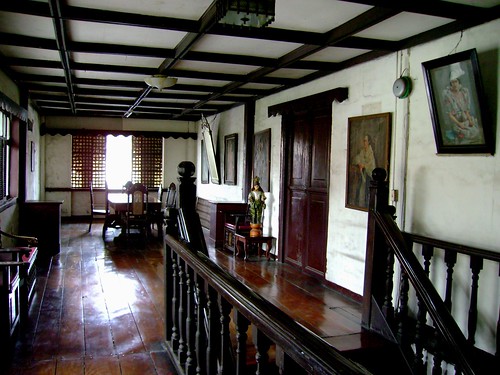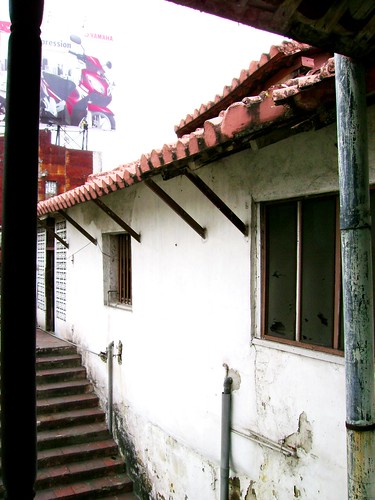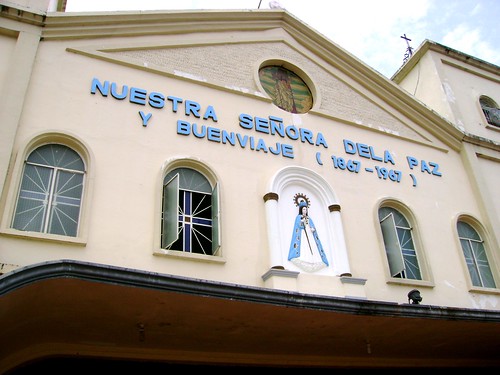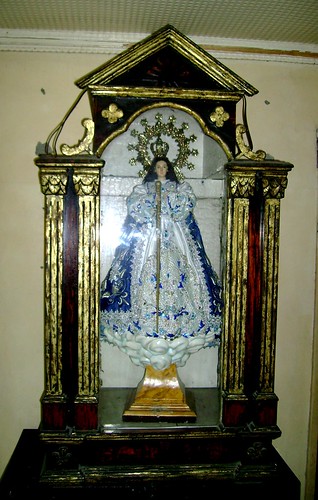In October, 1924, Captain Loriga and fellow pilot Captain Rafael Estévez y Martínezpresented to the Spanish Director General of Aviation a plan for a Madrid-Manila flight utilizing the new Breguet Type 19 biplane, which would help to further enhance Spain's reputation in aviation and bring back the Castilian flag to a former colony "where the love for Spain remains so vivid and warm."
The Director General endorsed the plan to Miguel Primo de Rivera y Orbaneja, el Marqués de Estella, the dictator of Spain and nephew of former Governor General of the Philippines Fernando Primo de Rivera. Primo de Rivera gave the proposed flight his official consent, and Capts. Loriga and Gallarza began supervising modifications to their Breguet biplanes, which were christened the "Magallanes" and "Legazpi" after the famous explorers respectively, as soon as the planes arrived in December, 1924.
The start of the Madrid-Manila flight on 8 April, 1925. Capt. Eduardo Gallarza prepares to board his Breguet Type 19 biplane, the "Legazpi."
The "Legazpi," ironically the only of the Breguets to survive the journey, leaves Macau for Aparri, Philippines on 12 May carrying Capts. Loriga and Gallarza. Portugal provided assistance in this great endeavor -- the Portuguese Navy also offered to station its cruiser "Republique" in the South China Sea in support of the Spanish aviators as they made the long overwater flight between the Portuguese colony and the Philippines. After experiencing numerous close calls with disaster, Capts. Loriga and Gallarza arrived in Manila on 13 May, 1925, completing the historic flight.
Capts. Eduardo Gallarza and Joaquín Loriga following their arrival in the Philippines, with some society women.
The two aviators were welcomed as heroes amid shouts of "Viva España," "Viva Filipinas," "Viva Loriga," and "Viva Gallarza" by the crowds of Manileños gathered to greet the arrival of the "Legazpi"which featured the flag of the Philippines on the left side of its fuselage. Capts. Loriga and Gallarza were carried off on the shoulders of the jubilant spectators as the young Manileñas and Spanish women threw themselves on the pilots, embracing and kissing them. A motorcade ride on streets lined with waving crowds followed, which took them to the Luneta. At the Luneta, the pilots laid wreaths at the foot of the Rizal monument, as a symbolic gesture. A similar ceremony was then held at the monument to the explorers Legazpi and Fr. Urdaneta, which was followed by an even larger one at the Manila Cathedral, where a choir of a hundred men and women sung a dedicatory hymn especially composed for the occasion by Prof. Trápaga. Following a press conference at the Casino Español de Manila, the pilots were taken to the Colegio de San Juan de Letran, in Intramuros, where they received hononary degrees from the Universidad de Santo Tomás and attended an evening banquet hosted by the presitigious institution. Speaking at the banquet, Fr. Calixto Prieto enthused in "the nobility of Spain's labor in her Christian colonization of the countries discovered by her,...mixing their bloods and creating new race types." In the days that followed, Capts. Loriga and Gallarza were feted and honored by many of the country's leading business magnates (including tycoon Don Enrique Zóbel y de Ayala and media mogul Don Alejandro Roces y González, who brought the pilots to Baguio; aristocrat-cum-insurance industry titan Don Antonio Melián y Pavía, whose el Hogar Filipino led the effort to have streets in Metro Manila named after the pilots; and Secretary of the Casino Español de Manila Don Antonio Ossorio, who brought the pilots to the shrine of Nuestra Senora de la Paz y Buen Viaje at the old Antipolo Church), prominent literary figures and scholars (including 1926 Premio Zóbel laureates Jesús Balmori and Manuel Bernabé; and Dr. Rafael Palma), and politicians (including Mayor Miguel Romualdez, Governor Filemón Pérez, Councilor Francisco Beech, Consul General Emilio de Motta, House Speaker Manuel Roxas, former President Gen. Emilio Aguinaldo, presidential aide-de-camp Manuel Nieto, and President Manuel L. Quezon). Prior to the two Spanish aviators' leaving the Philippines, Capt. Loriga paid a wonderful tribute to their well-wishers in the country (translated from the original Spanish):
«You, Spaniards, voluntarily expatriated, who have known to create in the midst of this hospitable country a home in which burns perpetual the sacred fire of the country, become a part of the great Spain extended over a chain of twenty sister republics and are the soldiers, unknown yet unforgotten, in that great crusade for the spiritual union of these lands, which at one time formed a gigantic empire fighting under a single standard. Viva Filipinas! Viva America! Viva España!»
Tragically, Capt. Joaquín Loriga died less than a year later in a plane crash in Spain. All of Manila was saddened by the terrible news. His death is said to have caused considerable grieving in the Spanish community in the Philippines -- especially among those of its ladies who became very close to their dashing heroes from Spain.
It was nearly eleven years later when, in 1936, a proposal for a Manila-Madrid flight finally took shape. A Filipino salesman for the Manila Trading and Supply Co. enrolled in flight training at the Valeriano School of Aviation named Juan Calvo approached his instructor Antonio Arnáiz with an idea for a Manila-Madrid flight, which he had conceived several years earlier. Arnáiz was receptive to the idea, and the two began the planning for it shortly thereafter. Don Antonio Arnáiz was a young, but capable, pilot who had trained at the Dallas Aviation School in the U.S. He belonged to a prominent hacendero clan from Bais, Negros Oriental and was able to obtain from his family the funds needed to purchase a Fairchild 24 plane.With the help of real estate broker Don Federico Calero y Ortíz, Jr. (father of legendary Filipino advertising executive Don Javier José "Jay Jay" L. Calero, a cousin of Vázquez-Prada family), the two aviators recruited publisher Carlos P. Romuloas a backer for their ambitious endeavor. However, they needed additional funding and ended up securing it from Arnáiz family friends and associates in Bais.
Having secured money for the venture, Antonio Arnáiz returned to Manila on 17 May, 1936 to supervise modifications to the Fairchild required for the trip at Nielson Airport with Juan Calvo. By the end of the month, they were ready for their record-breaking flight to Madrid.
On 27 May, 1936, Mayor Juan Posadas broke the traditional champagne bottle, christening their Fairchild 24 as the "Commonwealth of the Philippines."
At dawn of Friday, 29 May, Antonio Arnáiz and Juan Calvo climbed into the cockpit of the "Commonwealth of the Philippines" and took off at 5 AM following an exchange of waves between the pilots and the crowd of well-wishers gathered at the edge of the airfield. They arrived at Hong Kong late in the afternoon, having braved poor weather conditions (and lacking radio equipment) to become the first Filipino pilots to cross the China Sea. In Hong Kong, they were greeted enthusiastically by prominent members of the Filipino community (including Antonio's brother Don Ricardo Arnáiz) and also by a number of Americans and Britons.
The two Filipino pilots finally reached Spanish soil on 11 July, arriving at Barcelona. The Mayor of Barcelona presented Antonio Arnáiz and Juan Calvo keys to the city and welcomed them with a banquet at the mayoral palace. From there, they took off for Madrid and arrived at 5 PM, completing their historic journey and first-ever goodwill flight by Philippine aviators, dubbed the "Arnacal Flight."
Antonio Arnáiz and Juan Calvo with Juan's father Col. Juan Calvo, Sr. (center)
In Madrid, the Asociación Hispano-Filipinopresided over the welcome ceremonies for the arrival of the Filipino aviators. Madrid's entire Filipino community was present for the momentous occasion. Among those in attendance was Juan Calvo's long-lost father, Juan, Sr., who was a colonel in the Spanish Army. It would be the first reunion between father and son in many years and also their last. As the pilots stepped out of their plane, they were lifted up by the cheering crowd and carried on shoulders to the terminal, where the surviving hero of the original Madrid-Manila flight Eduardo Gallarza, now a Major, and other Spanish officials waited to honor the new heroes. The two Filipinos were the toast of Madrid and were treated to numerous receptions and even an hononary bullfight! Unfortunately, Spain was on the verge of civil war, and they just managed to escape ahead of the opening salvos. Their plane, the "Commonwealth of the Philippines," was lost when the ship carrying it was attacked by Republican forces, forcing the crew to run the vessel aground and scuttle it.
Antonio Arnáiz and Juan Calvo were commissioned as Lieutenant Colonels in the new Philippine Army Air Corps by President Manuel L. Quezon following their arrival back in Manila on 8 September, 1936. They were welcomed as heroes back home in the Philippines and honored with countless receptions. Juan Calvo went on to a career with the Iloilo-Negros Air Express Co. (INAEC), which was founded by the powerful López family. The Valeriano School of Aviation would eventually expand to become the Philippine Islands Aviation Corporation and selected Don Antonio Arnáiz to serve as Vice President and Director.

